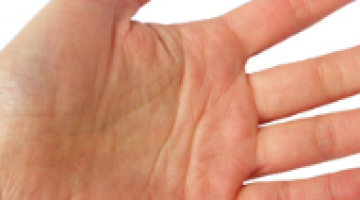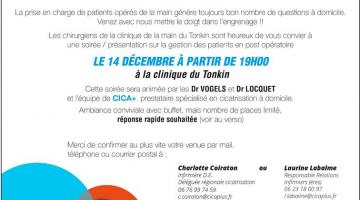responsive
DIP - >Proximal interphalangeal dislocation
A DIP dislocation causes tearing of the volar ans lateral ligaments in the finger..
Finger dislocations occur very often, especially during sport or ball games.
Most commonly, if the finger is bent backwards, it causes a tearing of the anterior ligament, also called the volar plate. This is often associated with lateral ligament tearing.

Symptomes
responsive
Type of therapy
The aim of treatment is to strengthen the ligaments and rebuild a mobile and stable joint.
Torn ligaments must be protected during healing period, generally from 3 to 6 weeks.
Initially a splint extends and supports the joint for 8 to 10 days. The splint supports the affected finger, leaving the others free.
The splint is removed after a week, and the affected finger is bound to another for support. A swab and thin elastoplasts are used to support the finger while allowing the joint to move. .
Thin stips of elastoplast are applied to smooth skin away from the joint area. the elastoplasts are easily adapted to different finger lengths.
Dynamic Syndactyly
This finger splint system protects and rehabilitates fingers which do not have a finger next to them for support. The dynamic splint should be worn continuosly for 15 days, after which it should be worn during sporting activities for a period of a month. .
Anterior Ligament Retraction
To avoid the ligament retracting, the splint must be checked regularly, to ensure that it is fully extended at all times.
If the splint loses some degrees of extension, it should be checked by the surgeon.
In some cases it may be appropriate to prescribe a simple extended splint to use at night, or a dynamic prosthesis.
Patient, une prise en charge axée sur
Traitement
Follow up and possible after-effects
The joint will remain swollen for several months, very often there will be minor swelling long-term.Swelling is due to the ligament healing process. It is completely normal and should not be cause for concern.
Two types of after-effect are possible:
- An unstable joint caused by stretching in the torn ligament. This instability is not common, unlike the instability seen in ankle injuries.
- Stiffness in the joint, which prevents the full extension of the finger. The anterior ligament retracts as it heals, and this prevents the finger from being fully extended.
DIP dislocations are very frequent. They are benign and fingers regain movement after treatment quite quickly, in most cases. The fingers should be extended regularly, to avoid any after-effects.





